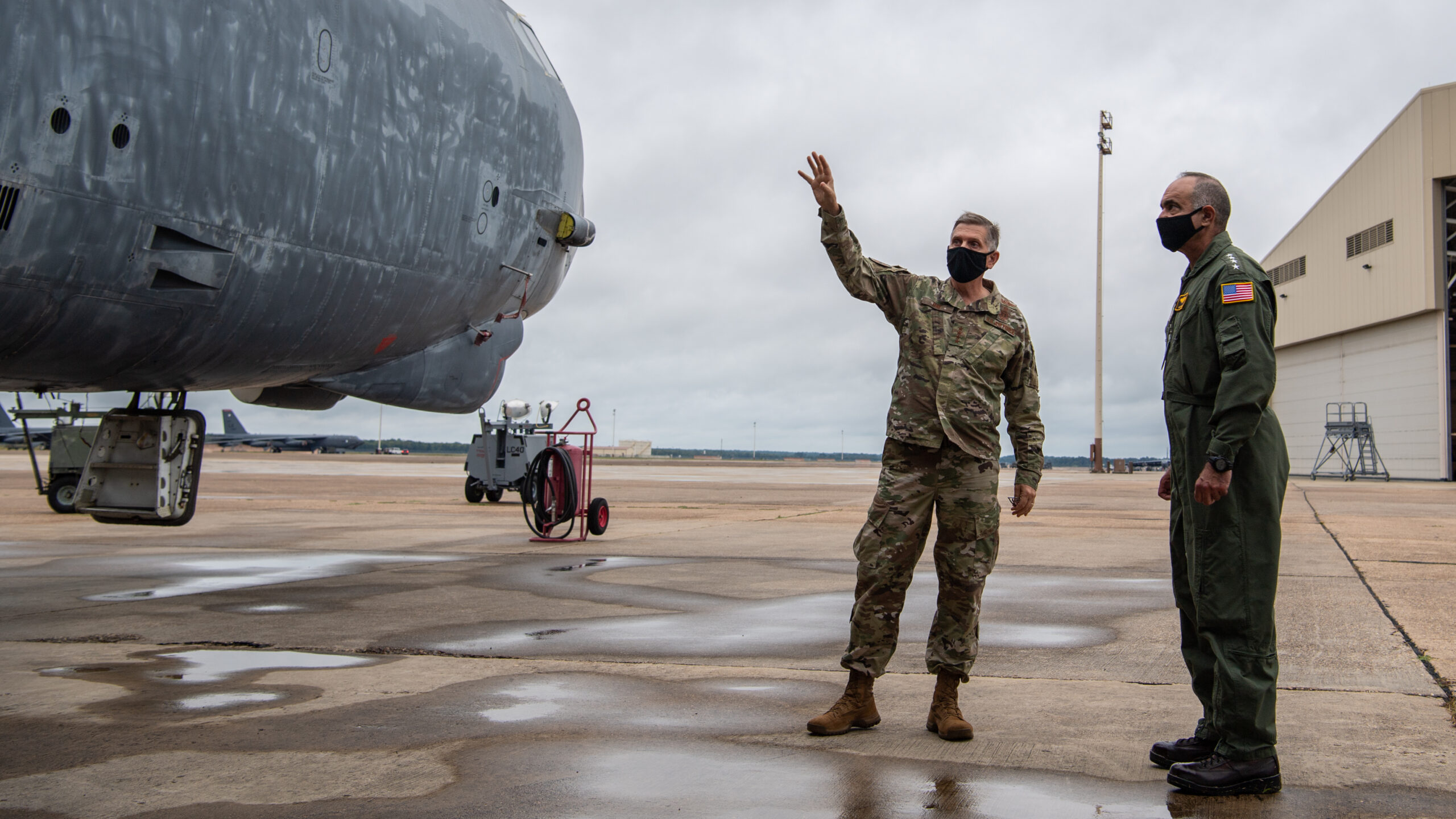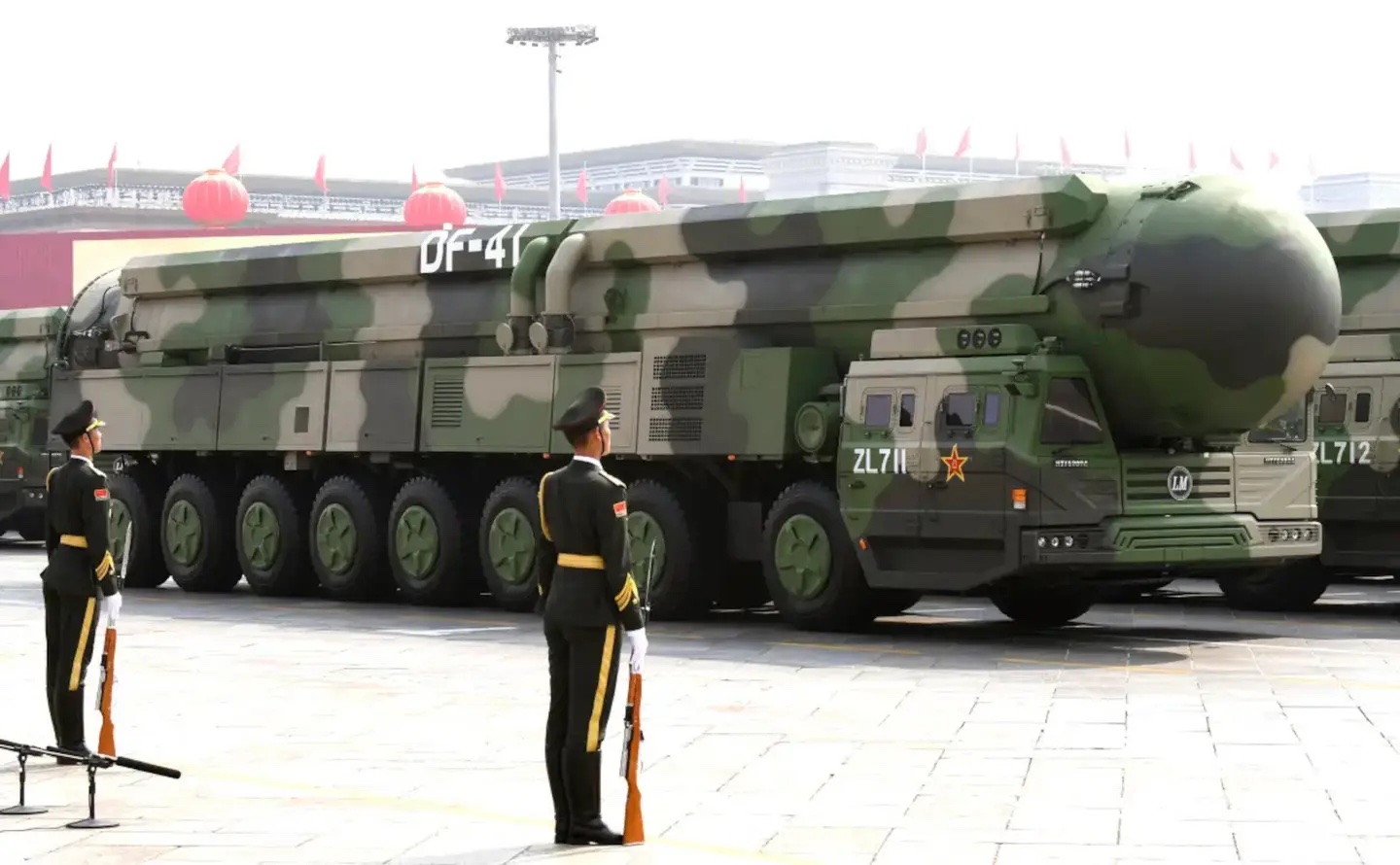Major conflict with China “is coming,” U.S. Strategic Command’s chief warns outright.
Russia’s war in Ukraine is a “warm up” to a protracted conflict with China for the U.S., the strategic forces commander suggests.
Navy Admiral Charles A. Richard, has warned that the U.S. should anticipate, and prepare for, a protracted conflict with China in the near future – which could be triggered by further hostile actions toward Taiwan by Chinese forces. U.S. Strategic Command – one of the Defense Department’s (DoD) 11 unified combatant commands in the U.S. Department of Defense – is responsible for America’s nuclear triad.
The remarks were given publicly by Richard at the Naval Submarine League’s 2022 Annual Symposium & Industry Update’s Awards Luncheon on November 3rd and were subsequently published by DoD.
The current war in Ukraine, Richard stressed, constitutes a prelude to a “very long” conflict between China and the U.S., with the U.S. level of conventional and nuclear deterrence against the country slowly eroding.

“This Ukraine crisis that we’re in right now, this is just the warmup,” Richard said. “The big one (i.e., a conflict with China) is coming. And it isn’t going to be very long before we’re going to get tested in ways that we haven’t been tested in a long time.”
Urgent rethinking of current U.S. defense strategies and deterrence capabilities is needed in order to prepare for the threat of conflict with China, Richard argued, as this would be a different caliber of conflict to Russia’s all-out invasion of Ukraine, which began in February.
“We have to do some rapid, fundamental change(s) in the way we approach the defense of this nation (the U.S.),” he said.
Overall, Richard offered a bleak assessment of America’s ability to deter China militarily in the near term:
“As I assess our level of deterrence against China, the ship is slowly sinking. It is sinking slowly, but it is sinking, as fundamentally they (China) are putting capability in the field faster than we are. As those curves keep going, it isn’t going to matter how good our (operating plan) is or how good our commanders are, or how good our horses are — we’re not going to have enough of them. And that is a very near-term problem.”
China has rapidly fielded and invested in high-end military technologies and equipment over the past few years – including massive investments in its Navy, new advanced drone concepts, modernized fighter jets as well as new missiles of all types. Virtually every facet of its military has seen significant overhaul over the last decade. For some time now, U.S. defense officials have warned against the threats to regional stability and the U.S. posed by China’s accelerated weapons and technology development, which has led to the country approaching parity, if not surpassing, the U.S. in certain areas of warfare. Moreover, significant operational challenges for U.S. forces, especially in terms of logistics, would manifest themselves should a major conflict with China arise.

Of particular concern to Richard, as head of U.S. Strategic Command, is the U.S.’s ability to field effective nuclear deterrence against China – which could play a role in preventing the country from engaging in an all-out invasion of Taiwan. New nuclear threats from Russia and North Korea are “vividly illuminating what nuclear coercion looks like and how you, or how you don’t, stand up to that,” he claimed.
Richard’s assessment suggests that the U.S. not only needs to bolster its own nuclear deterrence capabilities but prepare for continued threats of the use of nuclear weapons in future conflicts by its adversaries. For example, evidence that Russian military leaders have considered using tactical nuclear weapons in Ukraine has alarmed U.S. officials, demonstrating that the Kremlin’s rhetoric on using nuclear weapons could be something more than mere hyperbole. Fears are also growing among U.S. officials that North Korea might be about to undertake a new nuclear test, while official U.S. reports indicate that China’s nuclear-capable ballistic missile arsenal is ballooning in size.

Concerns have also been raised over the possibility that China and Russia are developing novel strategic weapons that might alter traditional deterrence thinking, which includes fractional orbital hypersonic capabilities and nuclear-powered long-range torpedoes.
Beyond nuclear deterrence, and in order to modernize at pace with its competitors, the U.S. military must be able to develop and field new technologies and capabilities quickly, Richard stated.
“We used to know how to move fast, and we have lost the art of that … We have got to get back into the business of not talking about how we are going to mitigate our assumed eventual failure to get Columbia in on time, and B-21, and LRSO, and flip it to the way we used to ask questions in this nation, which is what’s it going to take? Is it money? Is it people? Do you need authorities? What risk? That’s how we got to the Moon by 1969. We need to bring some of that back. Otherwise, China is simply going to out-compete us, and Russia isn’t going anywhere anytime soon.”

Learning from the past in order to speed-up procurement could come as part of the solution, he noted. One example Richard cited concerns the introduction of the AGM-28 Hound Dog cruise missile, which was brought into service back in 1960.
“The Air Force went from a request, almost written on a napkin … when they figured out in the late 1950s that the Soviet integrated air defense systems were getting to the point that the B-52 just wasn’t going to make it in, and we needed a thing called a ‘cruise missile.’ And so, they envisioned what a standoff weapon looks like.”
In some areas, the U.S. still holds key advantages over China militarily, such as in its undersea capabilities. But even here, procurement delays and maintenance problems could pose longer-term issues that could see the gap between the two countries close.

While the U.S.’s undersea capabilities might “still be the … only true asymmetric advantage we still have against our opponents,” Richard acknowledged, “unless we pick up the pace, in terms of getting our maintenance problems fixed, getting new construction going … if we can’t figure that out … we are not going to put ourselves in a good position to maintain strategic deterrence and national defense.”
All told, Admiral Richard’s remarks are absolutely some of the most dire we have heard from a top U.S. official in regard to the threat posed by China’s growing military might. Some aspects of them we have heard from his predecessor, but the degree to which he proclaims the U.S. is losing its competitive advantage vis-a-vis China and that a war is coming is truly stunning. And yes, there always could be investment/budgetary motivations behind comments like these, but there is no outright indication of that being the primary driver here. His comments seemed startlingly frank, at least from his point of view, but everyone can judge them to their own standards.
If anything else, the Admiral’s words are another indicator that the strategic momentum continues to shift in China’s favor and it’s happening at a quickening pace.
Contact the author: oliver@thewarzone.com
